How Climate Change Intensifies Natural Disasters
How well communities can cope with a disaster, depends on their exposure, as well as economic and social capacity to handle the emergency.
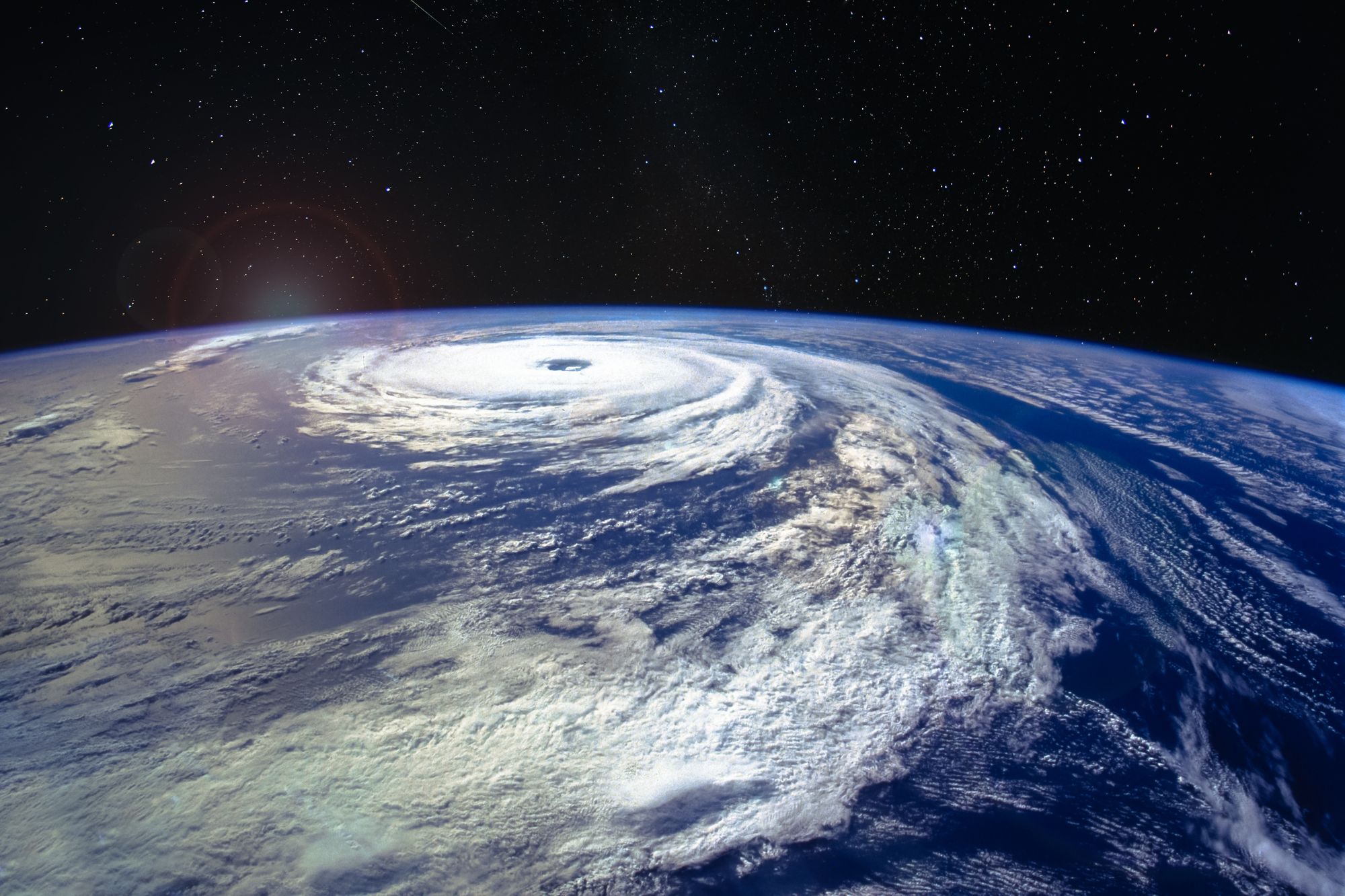
Natural disasters create severe challenges for local communities around the world. According to the United Nations, natural disaster is “a serious disruption of the functioning of a community or a society involving widespread human, material, economic, or environmental losses and impacts, which exceeds the ability of the affected community or society to cope using its own resources.”
How well communities can cope with a disaster, depends on their exposure, as well as economic and social capacity to handle the emergency. Natural disasters cause thousands of deaths yearly, with billions of dollars in losses from disruption of trade, destruction of homes and critical infrastructure, as well as disaster aid.
Climate scientists believe the warming temperatures, caused by the increase of greenhouse gases in the atmosphere, create longer and more intense cycles of natural disasters. In this article, we will explain how climate change affects various natural disasters and communities, using the latest scientific data and research.
What you need to know about climate change
Climate change is a significant change in climatic conditions (e.g. temperature, precipitation and wind) that lasts for a decade or longer. According to EPA, climate changes can occur as a result of one or a combination of these factors:
- Natural processes within the climate system (e.g. changes in ocean circulation)
- Changes in the intensity of solar radiation
- Human activities that affect the composition of the atmosphere (such as burning fossil fuels) and soil (e.g. deforestation, urbanization, desertification, etc.).
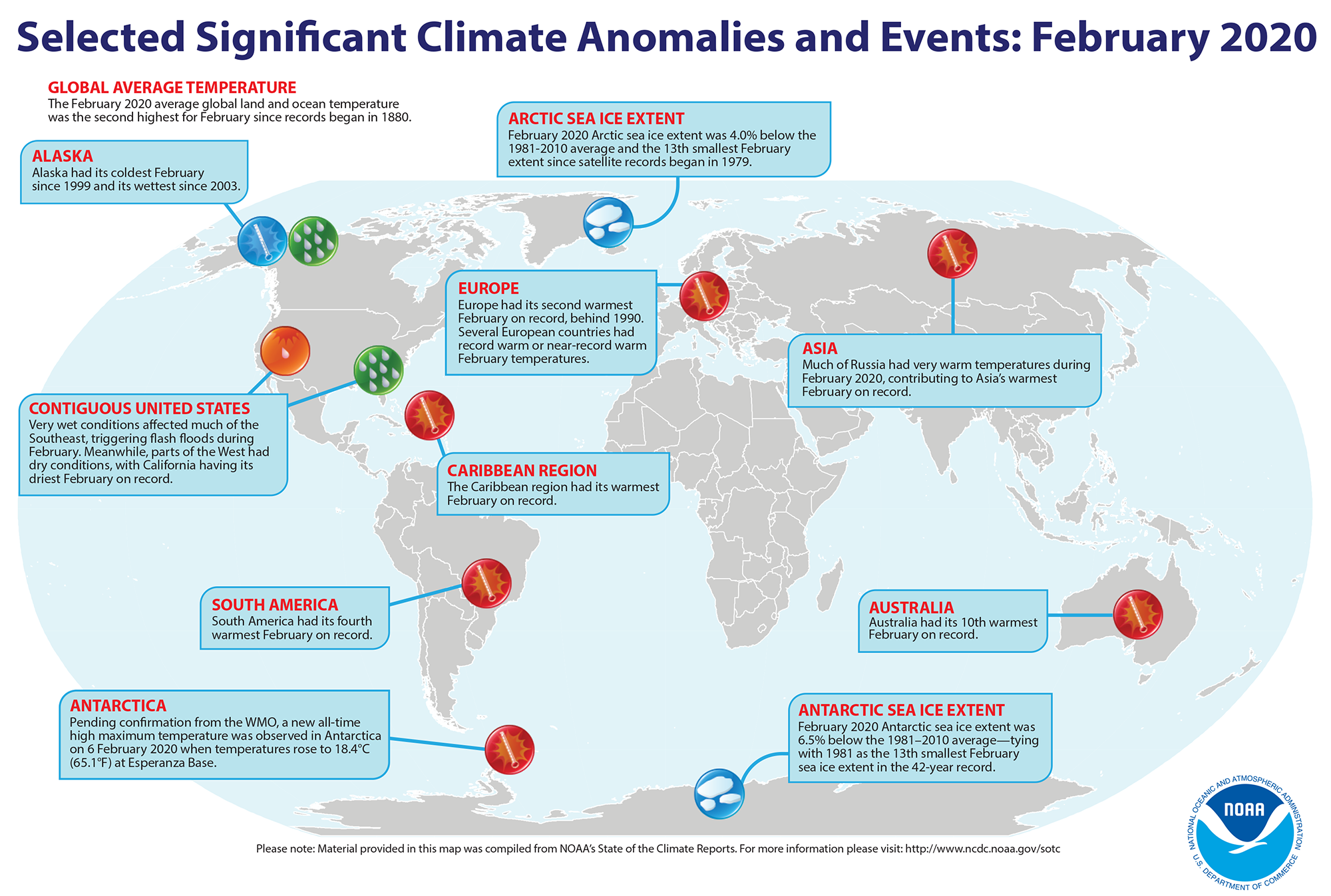
The prominent signs of climate change include increasing land and ocean heat, accelerating sea level rise, and melting ice.
Facts and statistics about climate change dynamics
- Since the 1980s, each decade has been warmer than any preceding decade since 1850. 2010-2019 was the warmest decade on record
- The last five years were the hottest years ever on record.
- 2016 was the hottest year on record, where a very strong El Niño event further increased the overall global warming trend.
- 2019 was the second-hottest year on record since 1880 (with the global average temperature 2 degrees Fahrenheit/ 1.1 °C above pre-industrial levels).
- Greenland, Antarctica ice is melting six times faster than in the 1990s.
- The Arctic sea-ice level in 2019 was the second lowest in the satellite record.
- Arctic ice melting is changing the ocean currents. The ocean current in the Arctic became faster and more turbulent due to rapid sea ice melt.
- In 2019, the global sea level has reached its highest value on record, mostly due to melting of ice sheets across Greenland and Antarctica .
Earth's climate record
Although an increase of a few degrees may not sound like a big deal, it's a rare event for the recent history of our planet. Earth's climate record, traced from ice cores, tree rings, and coral reefs, shows that the global average temperature remained quite stable over long periods of time.
Any small changes in temperature can create gigantic changes in our environment. For instance, at the end of the last ice age, the average temperatures were only 5-9 degrees cooler than now, and the Northeast United States was covered by more than 3,000 feet of ice.
Climate time machine
NASA has created this special Climate Time Machine that shows how the key climate indicators like global temperature, Carbon Dioxide, sea ice, and sea level are changing over time.
Weather and climate events have a strong impact on our health, food security, socio-economic development, human migration, and displacement, as well as land and marine ecosystems.
You can read more about the effects of climate change in Augurisk posts:
- How climate change promotes epidemics
- 17 facts about global warming
- 11 effects of climate change that we are currently experiencing
How climate change affects natural disasters
Global climate change is altering the precipitation and evaporation patterns around the world. This means the climate is becoming wetter in some areas, but drier in others. Increasingly severe droughts also escalate the risk for more frequent and larger fires.
Here’s a list of facts and statistics from the latest research about climate change and natural disasters:
Climate change accelerates hurricanes

Climate change is causing an increase in ocean temperatures. The energy from warmer water feeds the hurricanes. The rising temperatures of sea surface and air trigger more ocean water evaporation into our atmosphere. More air moisture means more extreme rainfall. Even a slight increase in the ocean temperature strengthens the wind damage from hurricanes dramatically.
- Warm water and warm air contributed to the massive rainfall from Hurricane Harvey, which dropped 27 trillion gallons of rain over Texas and Louisiana in 2017 and became the second most expensive natural disaster in U.S. history.
- Climate change alters the frequency, intensity, spatial distribution, and wetness of hurricanes. As sea water warms up, it expands. The resulting sea level rise elevates the storm surge power. Additionally, sea levels are also rising from the melting of glaciers, polar ice caps, and the great ice sheets of Greenland and Antarctica.
- In 2019, the tropical cyclone activity globally was above average. The Northern Hemisphere had 72 tropical cyclones, and 27 cyclones in the Southern Hemisphere.
- Tropical cyclones are stalling more frequently - the hurricanes in the North Atlantic are moving slower, meandering more, and last longer near the coast, causing more rainfall over confined locations (as compared to their dynamics over the past seven decades). For example, Dorian became one of the most intense tropical cyclones in 2019, with category 5 intensity landfall in the Bahamas. It was exceptionally slow-moving and remained near-stationary for about 24 hours, causing severe destruction.
- For the United States, hurricanes became the costliest natural disasters, causing over $50 billion in economic losses per year. The immediate damage and long-lasting negative impacts are projected to increase further, as climate change intensifies the hurricanes.
Climate change induces extreme floods
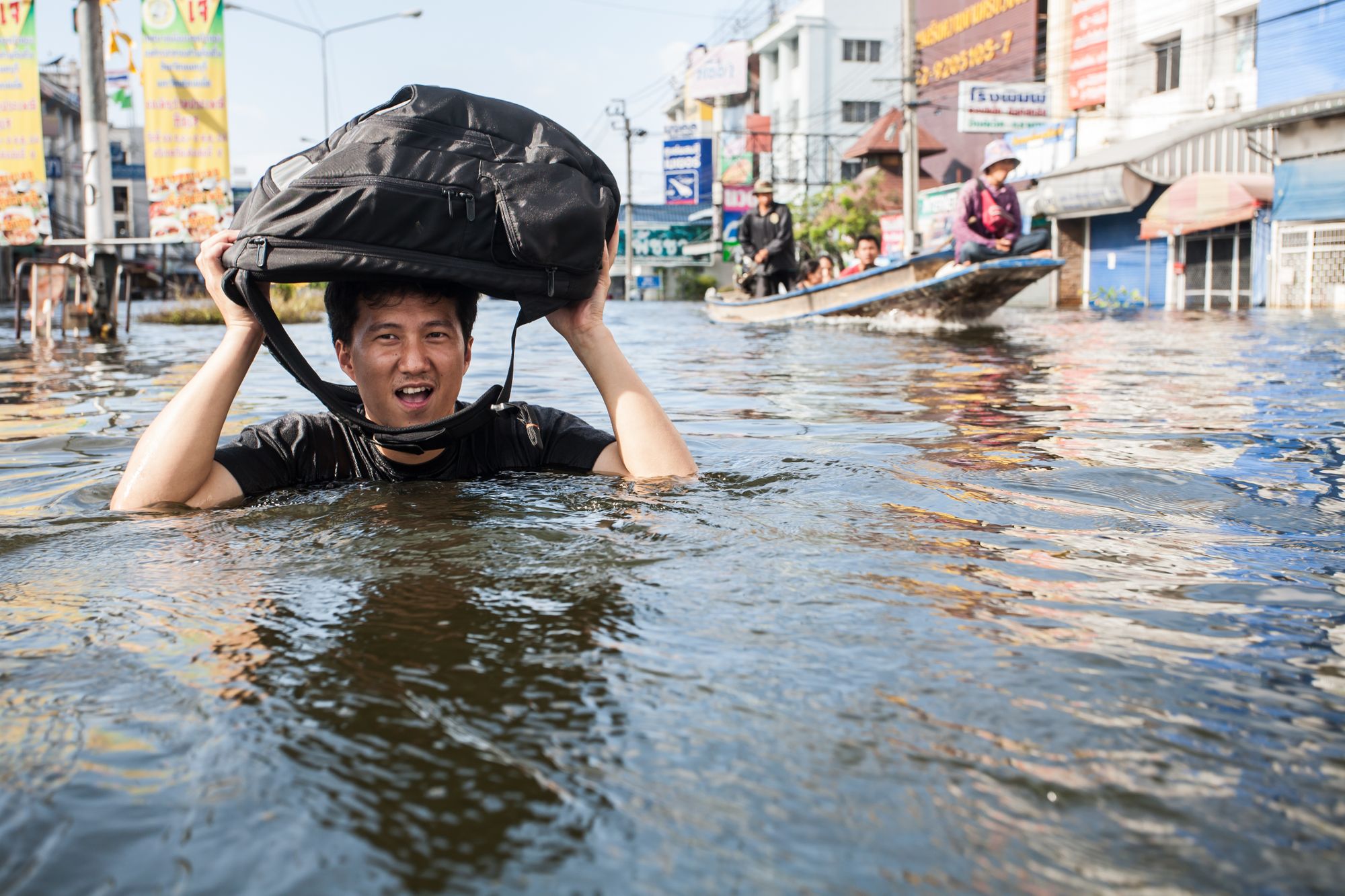
Climate change alters the distribution of water around the planet. As the greenhouse gas emissions rise, the Earth's atmosphere warms up, changing the patterns of rains and monsoons. Warmer air keeps more moisture, which means heavier rainfall for some areas, and insufficient rain for others.
- NASA's scientists observe more extremes in the frequency and magnitude of floods and droughts. These trends affect every aspect of our lives - the local weather, crop growth, water availability. Heavy rainfall affects the soil saturation and how high streams and rivers rise, which determines their capacity to withstand another storm. The increasing floods disrupt the lives of communities today, and are likely to get worse in the coming century.
- Across the United States, floods are increasing in frequency and intensity, and this rise will intensify with climate change. For every 1.8 °F increase in global temperatures, there is a 7% increase in the moisture of the atmosphere. Heavy rainfalls release 55 percent more rain in the Northeast U.S., 42 percent in the Midwest, and 27 percent more in the Southeast, compared to 50 years ago.
- Heavier precipitation in combination with higher storm surges from hurricanes and increasing snowmelt, create more future flood risks. If the U.S. continues to emit greenhouse gases at current rates, floods will occur five times more often by 2100, than in the latter half of the 20th century.
- The 12-month rainfall over the United States between July 2018 to June 2019 was the highest on record (962 mm). The total economic losses from flooding in the U.S. in 2019 were estimated at US$20 billion.
- Greenland's and Antarctic’s rapid melting of ice sheets will bring more flooding, as they increase the global sea level. When glaciers and ice sheets melt, they add more water to our ocean. Global warming has accelerated Greenland's ice mass loss from 25 billion tons per year in the 1990s to 234 billion tons per year at the moment.
- On average, Greenland's ice is melting 7 times faster today. The Greenland Ice Sheet has enough water to raise the sea level by 7.4 meters (24 feet).
Climate change causes severe drought
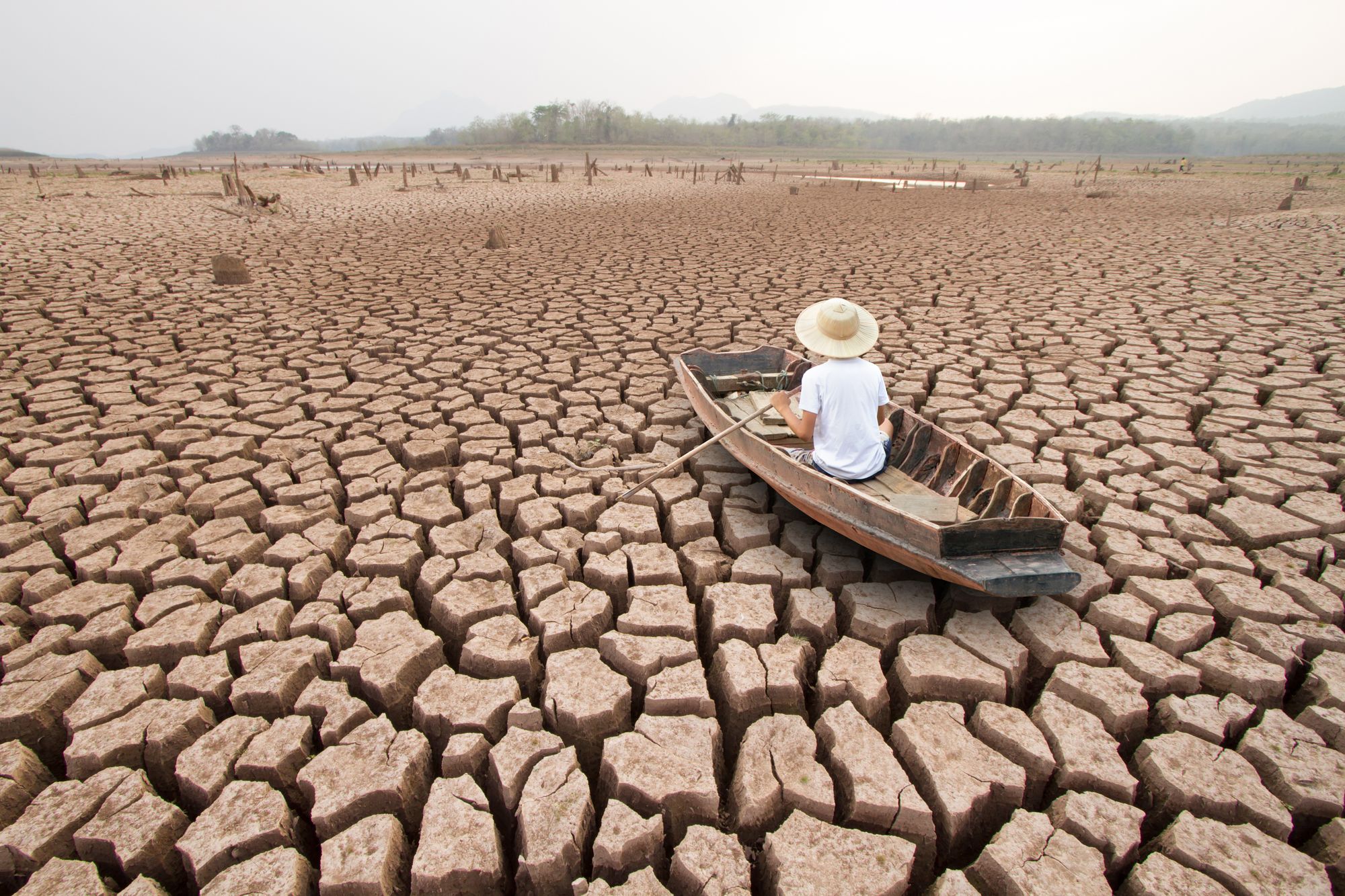
Human-generated greenhouse gases have been increasing the global drought risk for over 100 years.
Lack of rain due to changes in the precipitation puts more stress on our vegetation and water supply. Due to climate change, the frequency of droughts is expected to increase, so the natural reserves will have less chance to recover before the next drought strikes. Watch the NASA video below illustrating the megadrought risks projected for the American West in the 21st century
According to the World Meteorological Organization, in 2019 many parts of southeast Asia have suffered severe drought, while Australia had its driest year on record. Southern Africa, Central America and parts of South America also had abnormally low precipitation levels.
NASA's Goddard Space Flight Center used measurements from their satellite missions to develop a computer model with global maps of terrestrial water around the planet. They can forecast water availability in the United States for up to three months.
You can read more about the effects of climate change on droughts in Augurisk posts:
- After driest February on record, is a California drought inevitable?
- Drying Colorado River and 40 million reasons to do something about it
Climate change intensifies heatwaves

Due to human activities, the heat-trapping greenhouse gas emissions (GhG) build up in our atmosphere, so the temperatures rise. As a result, extreme heatwaves are becoming longer, more frequent, and more severe.
- In 2019, Europe was shattered by two severe heatwaves in June and July. France reached a national record of 46.0 °C (1.9 °C more than the previous record). Germany (42.6 °C), Netherlands (40.7 °C), Belgium (41.8 °C), Luxembourg (40.8 °C) and the United Kingdom (38.7 °C) have also hit their national records.
- The heat also reached the Nordic countries - Helsinki had its highest temperature on record (33.2 °C). In Australia, the 2018-2019 summer was the hottest on record, then in December, the temperature peaked as the hottest day on record (41.9 °C ).
- If the GhG emissions continue to grow, 74% of the world’s population can be exposed to extreme heatwaves, that can be deadly.
- If we don’t reduce GhG emissions, all regions of the United States will suffer more days with dangerous heat conditions every year.
- In the next 20 years, millions of people in the U.S. could face extreme heatwaves of 127 degrees Fahrenheit or more.
Climate change fuels wildfires

Climate change makes seasonal extremes stronger — wetter rainy seasons, followed by hotter, drier seasons. As the Earth's climate warms, the precipitation patterns tend to change drastically. A heavy wet season stimulates more vegetation growth, which then dries up, creating more fuel for fires to burn.
Persisting droughts create perfect conditions for wildfires. No rain means low humidity, so the dry trees and vegetation provide fresh fuel for wildfires. Any spark from lightning, electrical failures, human error or planned fires can create a megafire disaster.
- Due to climate change, wildfires are becoming more frequent, large, intense, and severe. As the American West experiences more warming and drying, there are progressively more devastating “megafires”, and the fire seasons tend to last longer. Because of climate change, vegetation dryness in these states has increased by half since 1979. Hence, the area burned by wildfires has nearly doubled, and the average wildfire season became longer by 78 days.
- Climate change increases the risk of wildfires in multiple ways. If the temperatures are higher during different seasons and the snow melts earlier in the spring, the forests and ecosystems become more vulnerable to burning. The risks of fire also depends on the types of vegetation, drought conditions, and how people alter the landscape. Higher temperatures and extreme droughts trigger tree stress and mortality, and exacerbate outbreaks of harmful insects, which makes the forests more susceptible to fires.
- Wildfires release around 290 million metric tons of carbon dioxide annually, which accelerates climate change further.
Climate change can trigger more landslides in high mountains
Climate change can trigger more frequent and intense rainfall in high mountain areas. Summer monsoon rains can destabilize steep mountainsides, triggering more massive landslides, especially in the High Mountain Asia region of China, Tibet, and Nepal. This region stores more freshwater in its snow and glaciers than any place on Earth, apart from the poles, and more than a billion people rely on it for drinking and irrigation.
The NASA model below shows the landslide risk for High Mountain Asia increasing in the summer months in the years 2061-2100, due to increasingly frequent and intense rainfall.
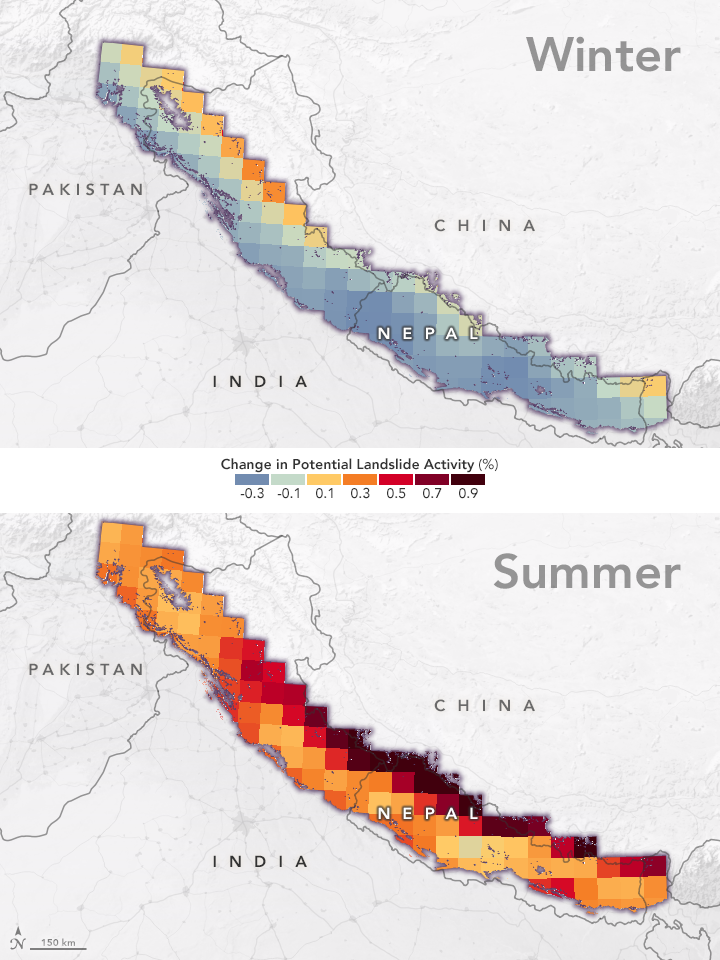
More landslides, especially in areas covered by glaciers and glacial lakes, can cause cascading disasters. Landslide dams and floods can damage areas downstream, even hundreds of miles away.
How natural disasters affect communities

Extreme weather can take a grave toll on human health, our health system, water supply, and food security. Natural disasters often destroy the local infrastructure, damage economies, create water and food shortages, displace vulnerable communities, force massive migrations, and fuel more conflicts between the affected people competing for resources.
Natural disasters threaten our health
In 2019, the record-setting high temperatures across Europe, Australia, India, and Japan had drastic effects on the health and wellbeing of the local communities. In Japan, a major heatwave caused over 18 000 hospitalizations and 100 deaths.
Extreme heatwaves are very dangerous for human health and wellbeing, and can be deadly. In France, over 20 000 emergency rooms were busy with heat-related illnesses during the two major heatwaves in the summer 2019, resulting in a total of 1,462 related deaths.
Natural disasters damage our food supply
Extreme weather events increase global hunger, creating severe food crises around the world. In 2018, over 820 million people have suffered from hunger across 33 countries due to food crises associated with natural disasters.
In 2019, due to climate extremes, displacement, conflict, and violence, the food supply has deteriorated significantly in some countries of the Greater Horn of Africa. Exceptional dryness from March to April followed by unusually heavy rainfall and floods in October-December has resulted in over 22.2 million people facing severe food insecurity in these regions.
Natural disasters displace millions of people
Over 6.7 million people were internally displaced due to disasters between January and June 2019 following climate events like Cyclone Idai in Southeast Africa, Cyclone Fani in South Asia, Hurricane Dorian in the Caribbean, and floods battering Iran, Philippines, and Ethiopia. This has reached 22 million in 2019 (in comparison to 17.2 million in 2018). Among natural hazards, floods and storms have caused most of the displacement.
Natural Hazard Risk Assessment
The global temperature rise intensifies the extreme heat and natural disasters in the U.S. and around the world. To prevent further drastic climate changes and reduce the threats of natural disasters, we need to cut our greenhouse gas emissions as much as possible as fast as we can. This requires effective protection of our ecosystems and a comprehensive preparedness and response strategy for emergencies caused by extreme climate events.
Augurisk offers an innovative platform for assessing risks for climate change, natural hazards, and societal risks. We evaluate environmental risks like coastal flooding, storms, earthquakes, wildfires, and volcano activity. We can also help you assess your surrounding healthcare infrastructure, and exposure risks to Coronavirus in your area.
Is your home or business at risk? Augurisk offers a free risk assessment on www.augurisk.com
